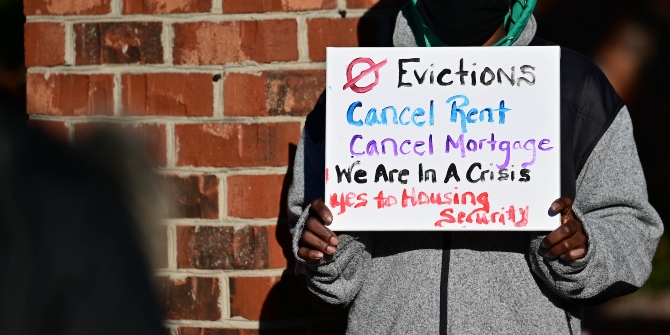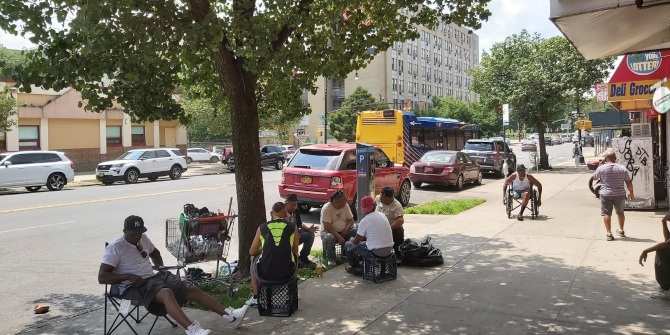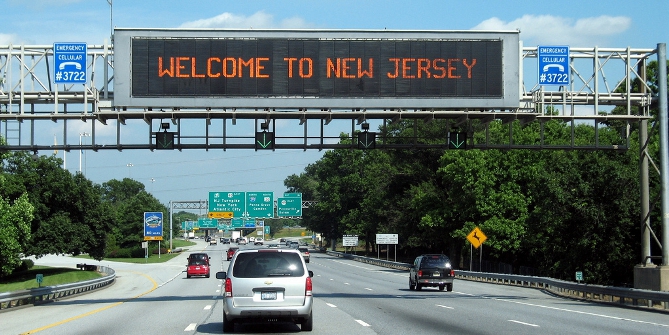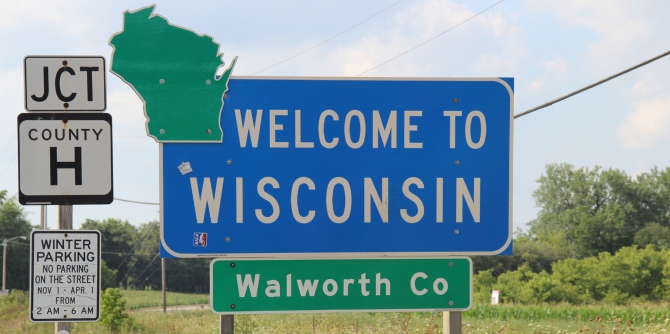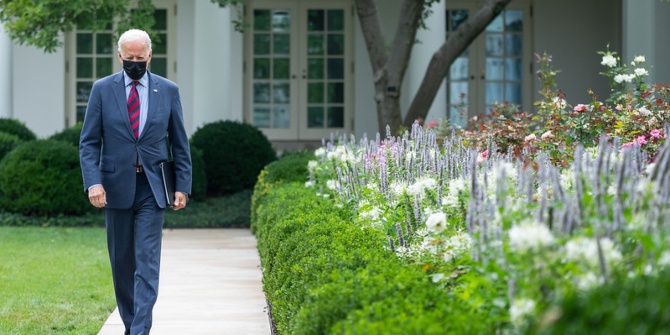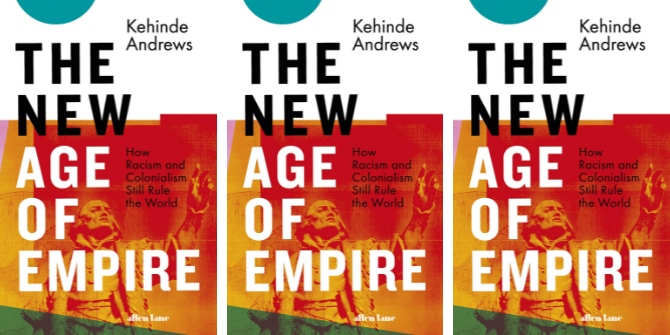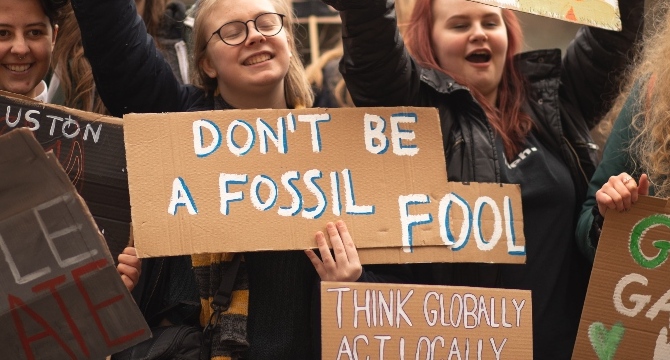 Christopher Dann discusses the compelling case of John Golomb, a sixty-seven year old ex-steel worker from the steel town of Monessen, Pennsylvania. As a representative case of many working-class, disenfranchised voters in the Rust Belt, he highlights how Trump’s current policies on protectionism, healthcare and tax cuts have affected ‘Golombish’ voters – life-long working-class Democrats turned one-off Republicans. He examines whether Trump can maintain his policy promises to these voters in 2018 in reviving their industries, and how this may impact their future voting proclivities in the next presidential election.
Christopher Dann discusses the compelling case of John Golomb, a sixty-seven year old ex-steel worker from the steel town of Monessen, Pennsylvania. As a representative case of many working-class, disenfranchised voters in the Rust Belt, he highlights how Trump’s current policies on protectionism, healthcare and tax cuts have affected ‘Golombish’ voters – life-long working-class Democrats turned one-off Republicans. He examines whether Trump can maintain his policy promises to these voters in 2018 in reviving their industries, and how this may impact their future voting proclivities in the next presidential election.
-
This essay is a runner-up in the LSE US Centre’s 2018 Student Essay competition. Click here to read the winner and the other runner up.
Who is John Golomb?
On the 28th June 2016, Republican presidential candidate Donald Trump visited the small steel town of Monessen, Pennsylvania while on his campaign trail within the Rust Belt. Held inside the Alumisource recycling factory, once the Wheeling Pittsburgh mill and home to two-thousand steel-workers who supposedly helped build the Golden Gate Bridge, Trump lambasted international trade agreements that had “[moved] our jobs, our wealth, our factories to Mexico and overseas”, the likes of which shut the Wheeling mill down in 1986. Trump then went on to trumpet and gesticulate in his reassuring vein commenting, “I. Love. Steel.”
In a town ex-President Barack Obama never visited during his incumbency or campaign trails, nor Hilary Clinton, those three words hit home for many attendees of the rally, including former Wheeling Pittsburgh mill steel-worker, John Golomb. A sixty-seven year old lifelong Democrat, Golomb voted Republican for the first time in 2016, and became the mainstream media’s spotlight on disenfranchised Trump supporters, the likes of the Wall Street Journal and ABC News reporting his story. Yet, why are John Golomb and the steel towns of the Rust Belt states such an interesting set of cases with regards to understanding Trump’s victory? In contrast to the growing literature explaining the rise of a populist right as being an emerging latent force, Pennsylvanian steel towns and Rust Belt states have periodically been Democrat-leaning as Figure 1 shows. As further illustrated by the popular vote statistics, the Rust Belt has not been like Southern states where traditionally a middle to low income, majority white demographic has voted Republican; the Trump voter type the mainstream media has often advanced and demonized.
Figure 1 – Average Net Difference between Republican and Democrat Popular Vote Shares in ‘Flipped’ Rust Belt States
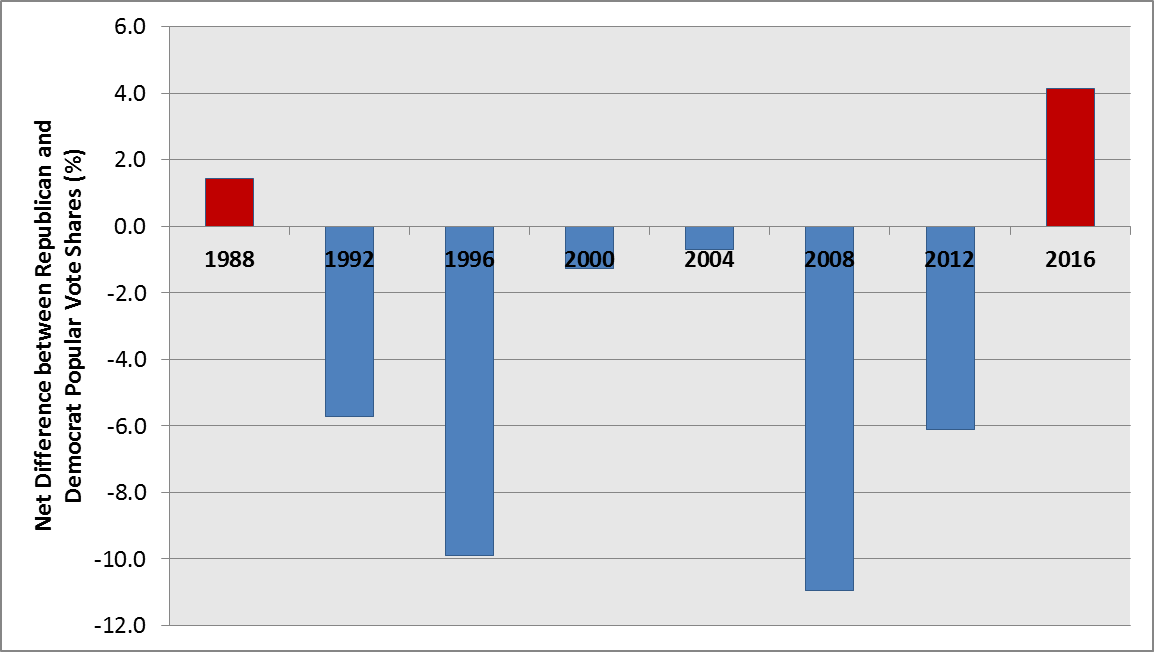
Note: States include Iowa, Michigan, Ohio, Pennsylvania and Wisconsin. Source: Federal Election Commission for 1988-2012, and Politico for 2016
Figure 1 illustrates the average net difference from Republican to Democrat popular vote shares for the last eight presidential elections, specifically in the Rust Belt states that ‘flipped’ in 2016. These states include Iowa, Michigan, Ohio, Pennsylvania and Wisconsin. Where the difference is positive, a Republican candidate won the popular vote, and where the difference is negative, a Democrat won. Accordingly, in Golomb’s own state of Pennsylvania, a Democrat has won the popular vote for the last six presidential elections since 1992, and even for the other major states in the Rust Belt, the general trend of being Democrat-leaning has also been evident.
These ‘Golombish’ voters are simply those Rust Belt citizens in similar predicaments to that of John Golomb – lifelong industrial working-class Democrats turned one-off Republicans, who flipped in the 2016 election for genuine socio-economic concerns. On that note, being such pivotal individuals who helped beget Trump’s victory and formed a large part of his ‘base’, 2018 will undoubtedly be a year Golombish voters see whether the President can keep his promises.

“Wheeling-Pittsburgh Steel, Monessen, PA” by Joseph is licensed under CC BY NC SA 2.0
Protectionism, Healthcare and Tax Cuts: What 2017 has meant for Golomb so far
For Golomb, the most symbolic act of President Trump’s first year in office would have been invoking Section 232 of the Trade Expansion Act of 1962, permitting the President to restrict certain imports upon review. The purpose of the investigation was to probe steel imports as being a potential threat to national security, and last month, the Department of Commerce returned their report to Trump, giving him a ninety-day window to decide on the imposition of tariffs, quotas, or tariff-rate quotas. While this may spark hopes for many Golombish voters, the secretive nature of the report, having not been publicly disclosed yet, may continue to leave some in very precarious situations for the first quarter of 2018. During Trump’s first year, employment in the manufacturing industry has actually risen within the ‘flipped’ Rust Belt states, as per Figure 2.
Figure 2 – Average Number of Employees in the Manufacturing Sector (‘000s) across the ‘Flipped’ Rust Belt States in Trump’s First Year
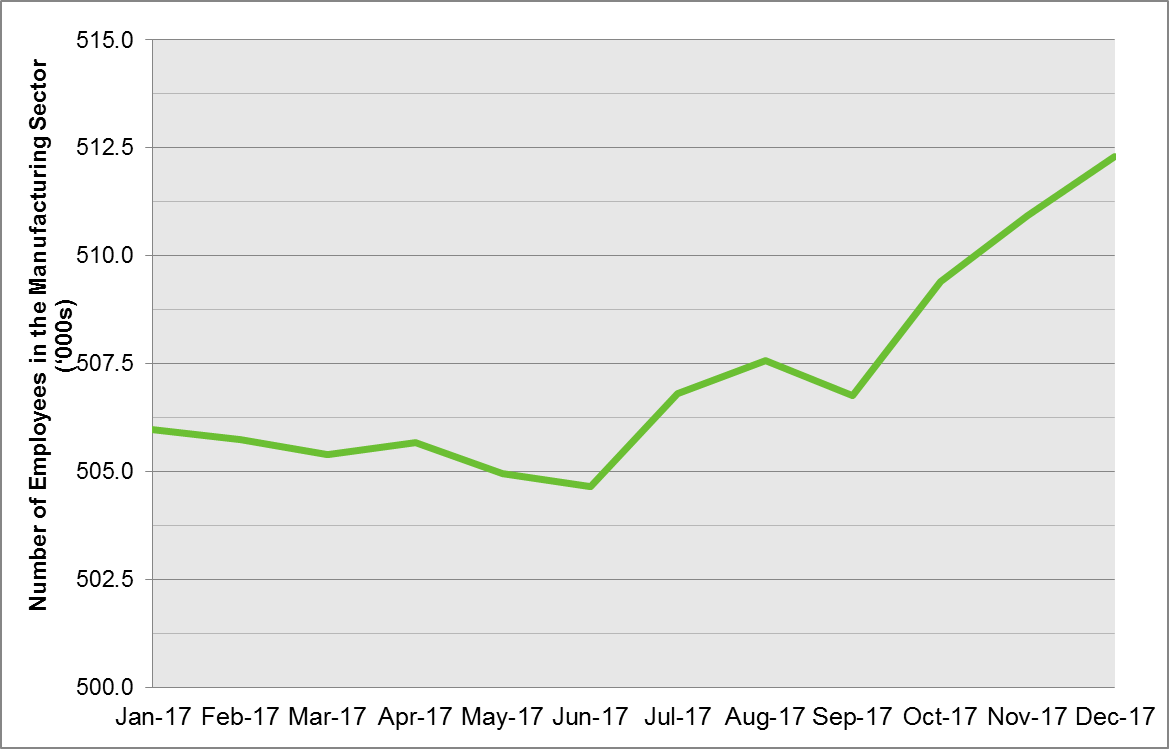
Source: Bureau of Labour Statistics
The increased number of workers within the manufacturing sector for these states will undoubtedly be a positive sign for Golombish voters of things to come. Yet, dependent on the results of the Section 232 investigation, the imposition of tariffs or quotas, as part of Trump’s ‘Buy American, Hire American’ agenda, could have varying effects on Golombish voters in continuing this trend. So far, the sentiment of protectionist policies has rushed foreign producers to the market with the desire to sell off as much product as possible, subsequently causing American steel imports to spike by 19.4 percent last year. These market reactions have thus led to further layoffs in certain factories, including Pennsylvanian based ArcelorMittal steel mill, which intends to cut nearly three-quarters of its labor force. Trump’s promises mean that Golomb and others will be expecting jobs to come back to their towns, to revive the industries that once defined whole communities in and around the Rust Belt. As such, invoking Section 232 may be an attractive measure to counter unfair competition abroad, but this could result in unintended consequences that only harm Golombish voters in 2018, the longer Trump waits.
Despite protectionist promises, the healthcare front may not prove so favorable to Golomb in 2018 either. The passing of the American Health Care Act of 2017 (H.R. 1628) as a budget reconciliatory bill encompasses major cuts to Medicaid. In Golomb’s own county of Westmoreland, there are approximately 68,000 enrollees in health-insurance programs effectuated by Obama’s Affordable Care Act, and according to the Kaiser Family Foundation, Rust Belt states have been some of the largest beneficiaries of Medicaid expansion. While there is still much Congressional gridlock in fully repealing Obamacare, Republican efforts to phase the program out could leave thousands of Golombish voters without healthcare protection, and the resulting trade-off between industrial revival and healthcare revocation could induce a type of zero-sum effect.
In addition to healthcare, the passing of ‘Public Law 115-97’, or Trump’s tax cuts, in November of last year is also unlikely to help Golombish voters to prosper. Whilst it is inevitable that more disposable income will be leftover across the income spectrum, analysis by the Urban-Brookings Tax Policy Center shows that the bottom 95 percent of households will see their after-tax incomes increase by only 0.5 percent to 1.2 percent, in stark contrast to an 8.5 percent increase, or US$130,000 average, for the top 1 percent of American earners. Given the tax cuts are also not ‘revenue neutral’ in being offset by federal spending cuts, government expenditure could therefore be facilitated in the form of further borrowing from creditors Trump castigated on his Rust Belt campaign trail for unfair trade deals – like China. Accordingly, if Trump cannot deliver on his protectionist policies, 2018 may continue to be a year where Golombish voters are left isolated within the Rust Belt, with a few more dimes in their pockets, but decreased affordable access to doctors.
Given many of the Rust Belt states are also ‘swing states’, it would indeed be very easy for Golombish voters to swing back into Democratic hands, and there is no doubt the upcoming special election in Pennsylvania’s eighteenth Congressional district, which involves a mix of deindustrialized counties, including Golomb’s Westmoreland, will confirm this possibility. For now, assurances of protectionism look politically attractive. But, with the realities of tax cuts materializing for the Rust Belt working-class, and as further repeals of Obamacare transpire, for John Golomb in America, 2018 is unlikely to be a year of kept promises.
Please read our comments policy before commenting
Note: This article gives the views of the author, and not the position of USAPP– American Politics and Policy, nor of the London School of Economics.
Shortened URL for this post: http://bit.ly/2G1PG5m
______________________
About the author
 Christopher Dann – LSE Government
Christopher Dann – LSE Government
Christopher Dann is a second year undergraduate student at the London School of Economics reading BSc Government. His primary research interests involve political economy and quantitative political science, and he shall be presenting further research at the Political Studies Association Undergraduate Conference 2018 this month.



